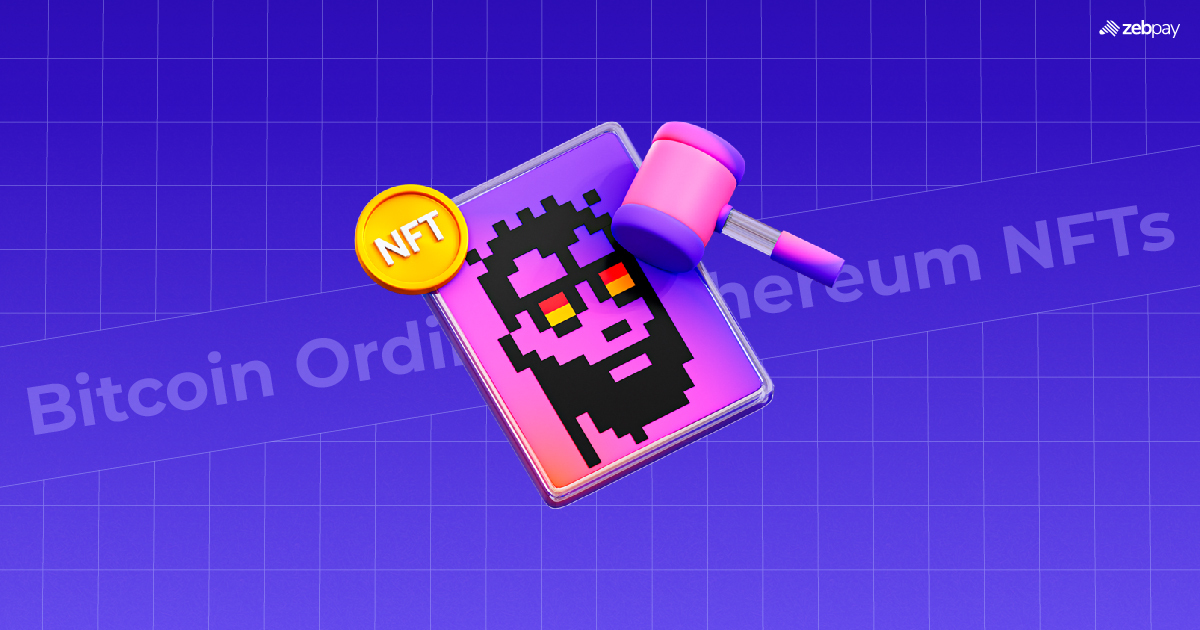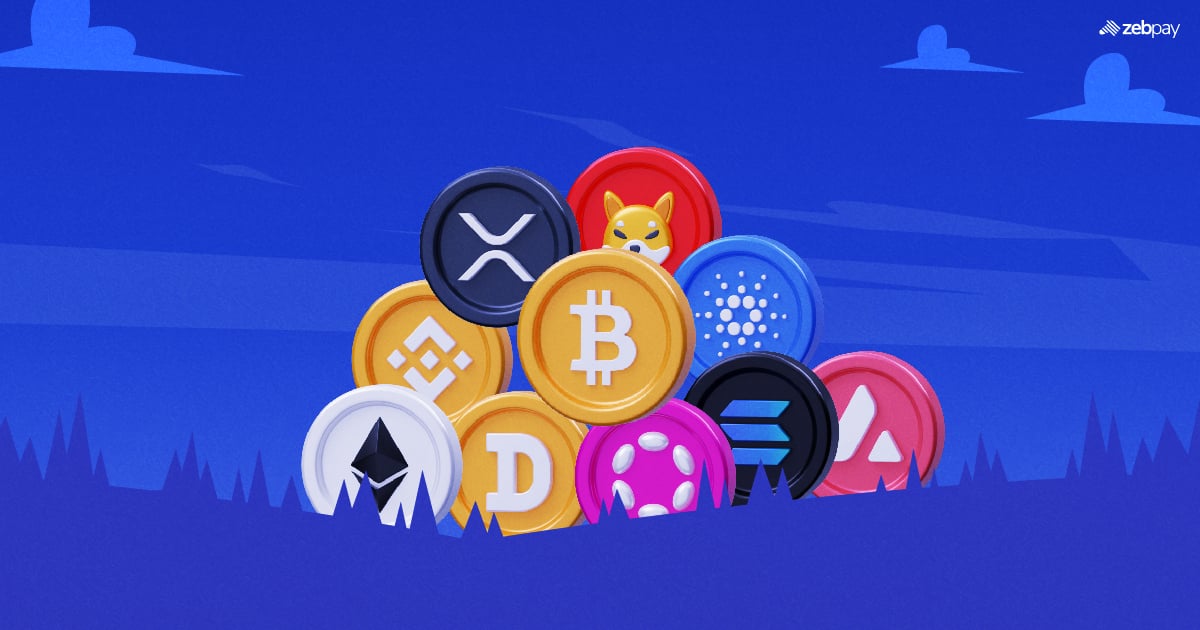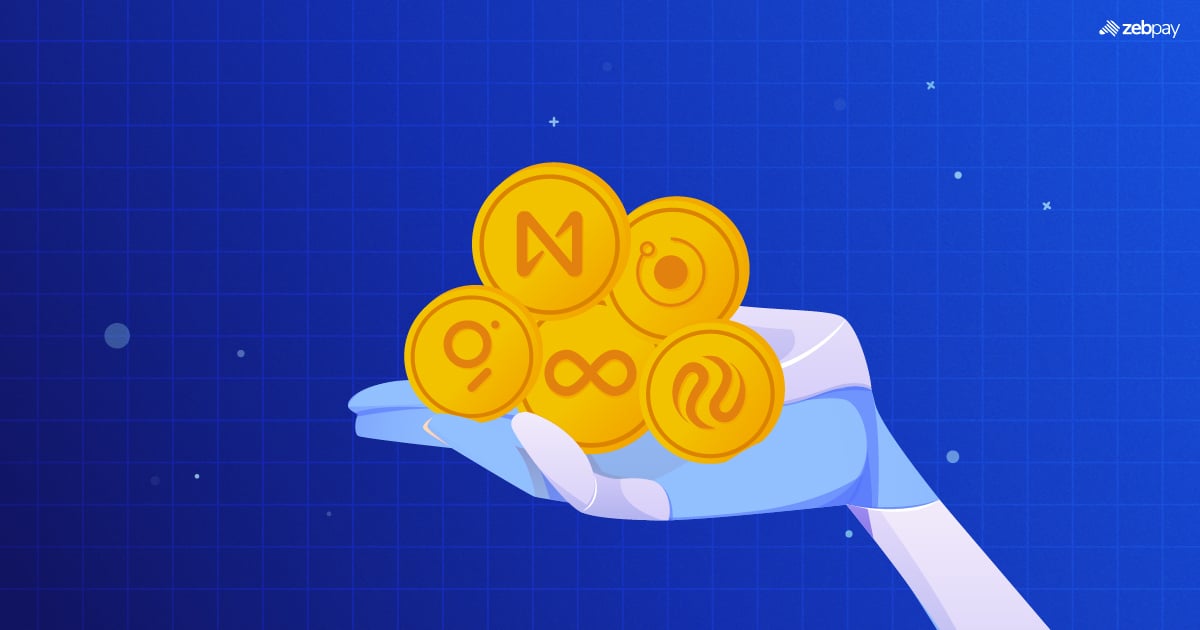In the ever-changing world of digital assets, something interesting has happened: Bitcoin, the OG of crypto, originally all about simple transactions, has now become a hotspot for digital collectors thanks to Bitcoin Ordinals. This twist has set off a big debate because it’s quite different from Ethereum’s well-known NFT scene, which has been the top spot for non-fungible tokens.
Let’s dive into the details of Bitcoin Ordinals versus Ethereum NFTs. We’ll uncover a cool clash of ideas, technology, and communities. Come along as we dig into this surprising new chapter in the crypto world and what it could mean for owning digital assets and art in the future.
Understanding Bitcoin Ordinals
Crypto developers are always pushing boundaries. Well, they’ve been going all out to bring NFTs to the Bitcoin blockchain. The latest buzz is about Ordinals, a fresh idea that lets you create NFTs right on Bitcoin. Think of Bitcoin Ordinals as little Satoshis that have been personalized with a dash of something special. It could be a cute note, a cool image, or even a fun video clip—whatever floats your boat! One Bitcoin can be broken into tiny pieces called Satoshis. Now, here’s where it gets interesting—users can take these individual Satoshis and add a personal touch using the Ordinals protocol, creating what we call an Ordinal. This feature came to life thanks to the Taproot soft fork in 2021, which added a special area called the witness section. Users can leave all sorts of goodies like audio clips, videos, and JPEGs right on their Satoshis.
Read more: What are Bitcoin Ordinals
This isn’t just about adding flair; it’s opened up a whole new world for exploring, trading, and enjoying NFTs in a way that’s never been done before. Since their grand entrance, Ordinals have been flooded with all sorts of unique inscriptions, making them a hot topic in the digital world.
Understanding Ethereum NFT
Think of NFTs or non-fungible tokens, as one-of-a-kind digital collectibles that live mostly on the Ethereum blockchain. They’re like little digital treasures representing something special—could be a purely digital creation or even a digital version of something real. What makes each NFT super special is that it’s unique, with all its important details kept safe and sound in Smart contracts. These contracts are like digital certificates that prove the real deal or show who owns it in the digital realm.
Difference Between Bitcoin Ordinals vs Ethereum NFT
When we discuss Bitcoin Ordinals and Ethereum NFTs, we’re talking about two distinct methods of dealing with unique tokens in the world of blockchain. They each have their standout features and characteristics.
- Underlying Blockchain:
Bitcoin Ordinals are similar to etchings on the Bitcoin blockchain, making use of its security and widespread use. On the other hand, Ethereum NFTs are crafted on the Ethereum blockchain, which has a rich history of embracing NFTs early on due to its Smart contract capabilities.
- Smart Contract Functionality:
Ethereum NFTs operate on smart contracts, enabling intricate rules, royalties, and programmable features. In contrast, Bitcoin Ordinals lack Smart contract functionality as they are directly engraved onto satoshis, Bitcoin’s smallest units, without requiring additional code layers for execution.
- Storage Method:
Ordinals are directly etched onto individual satoshis, constituting an on-chain storage solution. Ethereum NFTs usually keep a link to the asset on the blockchain, but the actual asset is often stored off the blockchain, on platforms like centralized servers.
- NFT Marketplace:
NFTs and Ordinals have quite different market dynamics. NFTs are sold on various platforms that are easy to use and offer extra features like auctions and bundles. On the flip side, trading Ordinals is more complex right now, needing a good grasp of Bitcoin transactions and often involves peer-to-peer exchanges. But, things are changing in the Ordinals market, with simpler tools in the works.
Read more: NFT Vs Crypto
Bitcoin Ordinals vs Ethereum NFTs: Use Cases
The Ethereum NFT scene is buzzing with activity, providing a range of applications that matter. Let’s focus on digital art for a moment. Ethereum NFTs have transformed the art world by giving artists a direct route to earning from their creations, skipping traditional galleries and intermediaries. This direct connection between creators and art lovers is game-changing—it lets artists earn a living from their digital creations, while collectors get to own exclusive pieces of history that are authenticated and limited in number.
Yet, the influence of Ethereum NFTs extends beyond art. They’ve permeated the virtual real estate sector, creating an entirely new category of assets. Picture owning virtual land where you can build, showcase, and monetize your digital space—an actual Monopoly game with tangible value and space for innovation. Gaming is another domain where Ethereum NFTs are making substantial progress. In-game items, characters, and even entire gaming environments are being tokenized, granting a level of ownership and traceability previously unattainable.
Read more: What Is Crypto Gaming
Digital art undergoes a renaissance with the promise of immutability and verifiable ownership offered by Bitcoin Ordinals. Artists now have a blockchain-based platform to safeguard their creations, empowering them with genuine artistic freedom away from centralized platforms. “Bitcoin Bandits,” a digital art collection etched onto the Bitcoin blockchain, presents unique characters inspired by cyberpunk aesthetics. This project showcases how artists can utilize Ordinals to create captivating art with rich storytelling, nurturing a vibrant community around their creations. From tickets for events to academic certifications, Ordinals provide a secure means to inscribe and authenticate crucial documents, mitigating the risk of tampering.
Future of Bitcoin Ordinals and Ethereum NFT
When contemplating the future trajectory of innovation for Bitcoin Ordinals and Ethereum NFTs, we’re not just talking about theoretical advancements. We’re embarking on an advanced technological journey filled with thrilling innovations.
Ethereum NFTs have already created a vibrant canvas. We’ve observed a plethora of creations ranging from pixelated characters to digital masterpieces, with developers continually pushing boundaries within the ecosystem. Ethereum’s move to Proof of Stake through the Merge has provided an additional thrust to an already ascending trajectory. The current emphasis? Improving scalability, sustainability, and complexity through layer 2 solutions, which enable quicker transactions and reduced costs.
Yet, let’s not disregard Bitcoin Ordinals, the newcomers in the NFT sphere. They’ve taken the NFT concept and firmly embedded it within Bitcoin’s realm. It’s akin to stumbling upon a concealed chamber in your home, with far-reaching implications. This protocol could convert the world’s most secure blockchain into a repository of digital treasures. While it’s still early days the potential for Ordinals to challenge norms is evident.
Conclusion
In summary, Ethereum NFTs are advancing rapidly, refining, and broadening their scope like a high-speed train laying down fresh tracks as it moves forward. In contrast, Bitcoin Ordinals are an unknown variable, a factor that could either reshape conventions or become a captivating segment in crypto’s history. As we keep delving into the vast world of digital assets, we’re excited to see what new and creative ideas the future holds.
If you found this blog useful, share it with other like-minded crypto enthusiasts. Click on the button below to begin your crypto trading journey using ZebPay.







